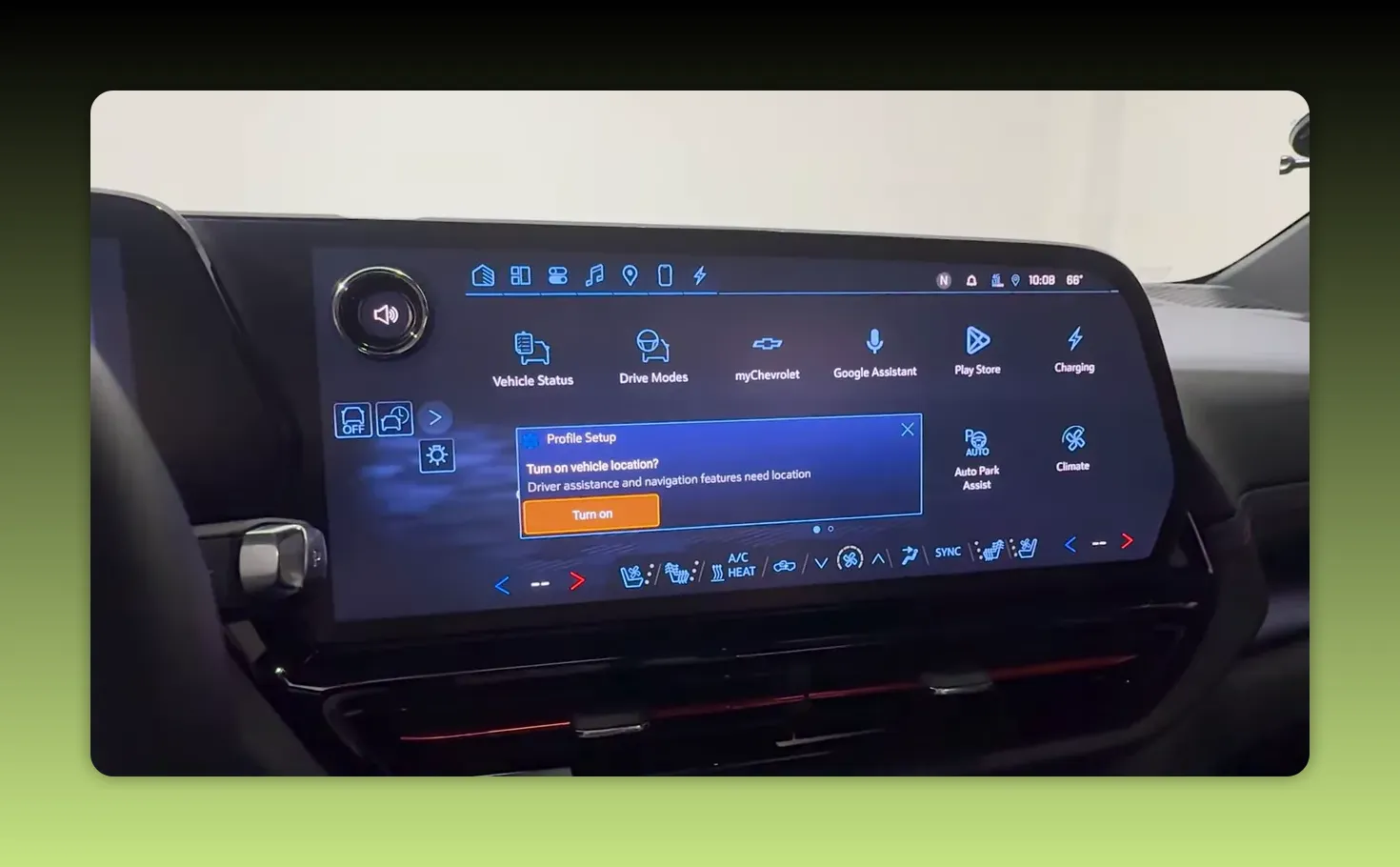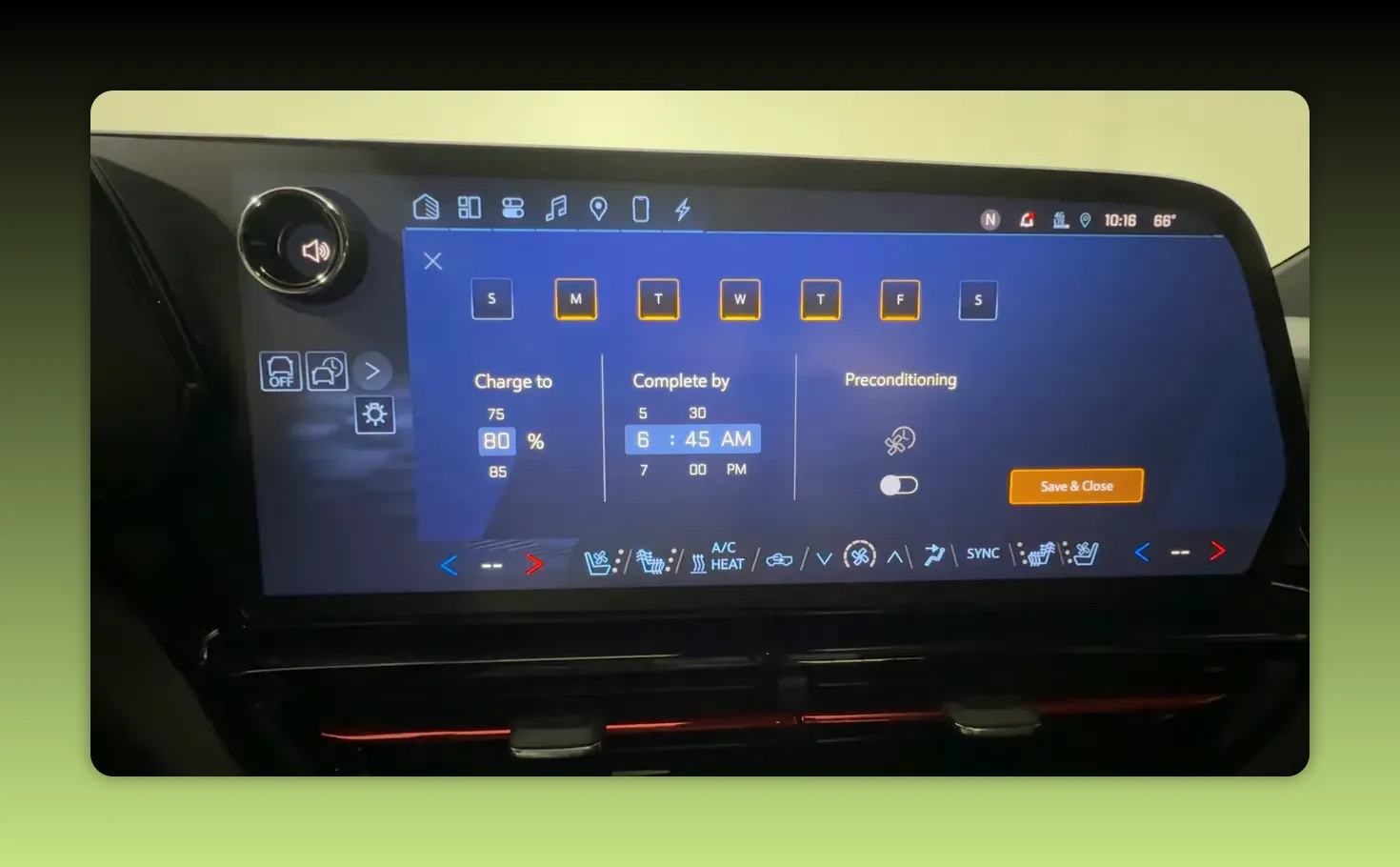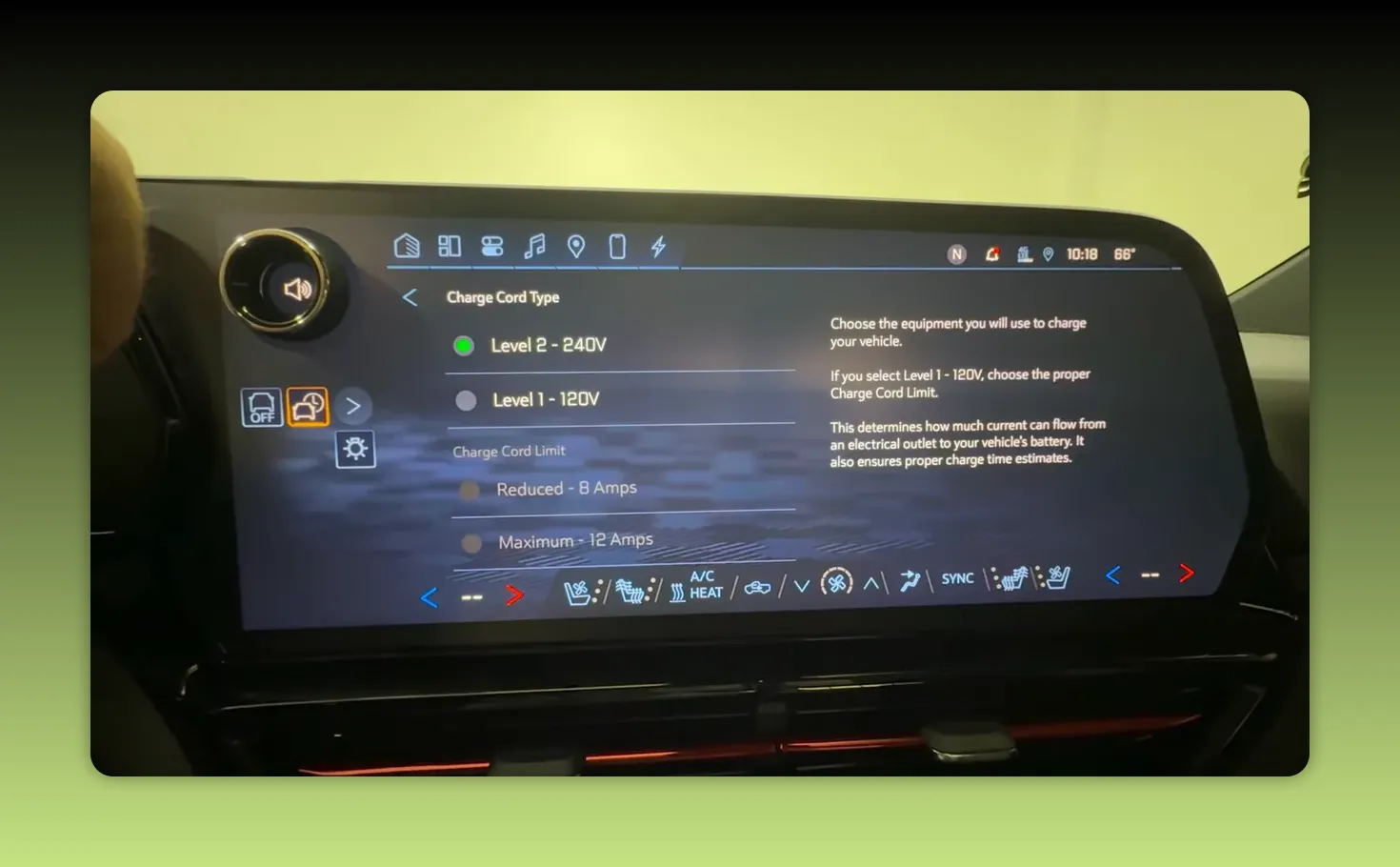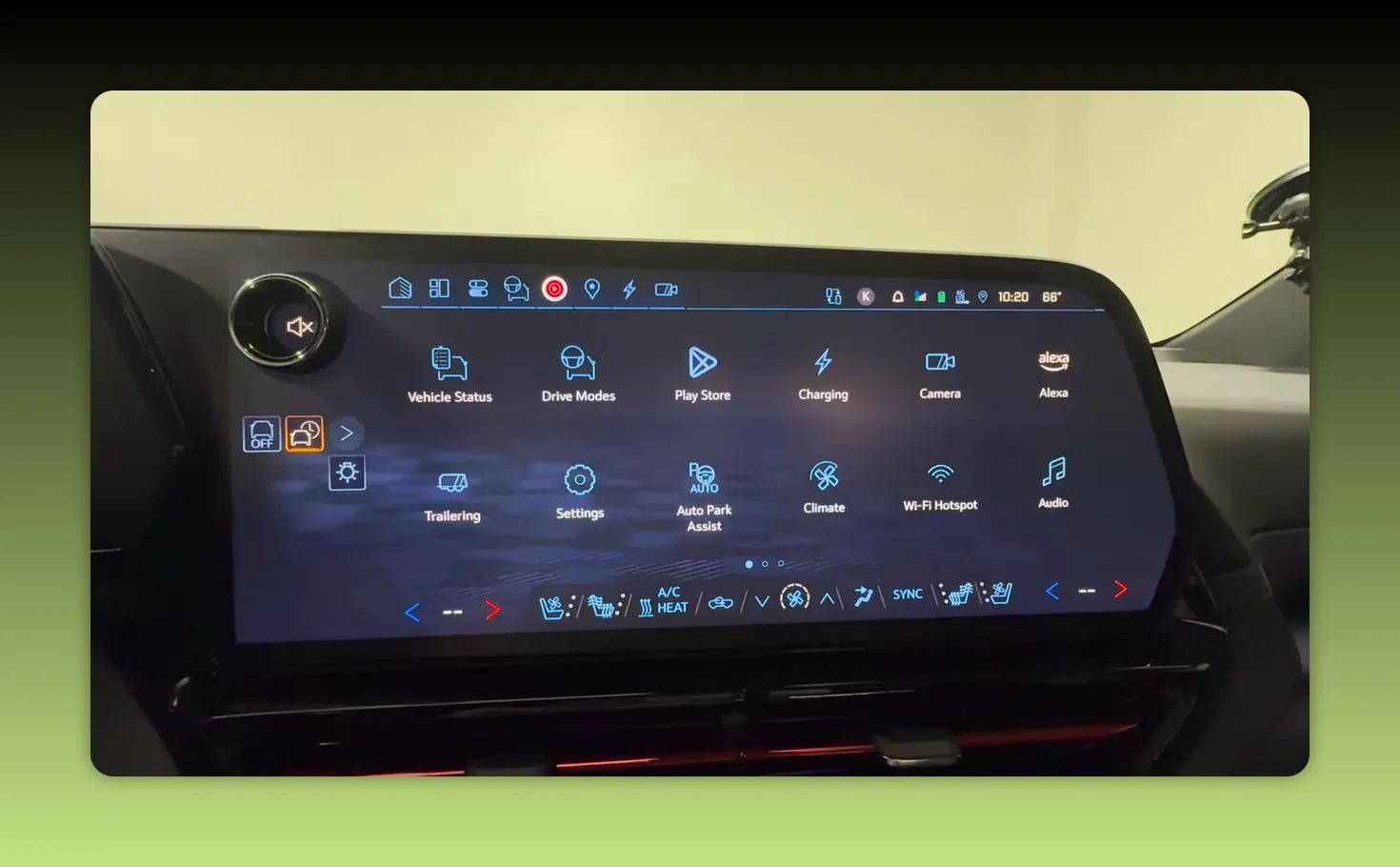
Top Settings to Tweak After Delivery: Silverado EV & Sierra EV
Share
Just took delivery of a Silverado EV or Sierra EV? Tuning a handful of settings in the first 24 hours will save time, avoid surprises, and help preserve your battery for the long haul.
Below are the practical, no-nonsense adjustments I set up right away, organized so you can follow along and get your truck dialed in fast.
1. Create and Secure Profiles
Set up a dedicated profile for each person who regularly drives the truck. Profiles let you personalize drive modes, climate, navigation history, shortcuts, and synced accounts so everyone gets their preferred setup automatically.
Do this: Add a Google account and a My Chevrolet account to each profile. Scan the QR code on the screen from your phone to link your Google account quickly and connect the My Chevrolet account for charge-assist features and the mobile app.

2. Customize My Mode (Your Personalized Drive Mode)
Use My Mode as a ready-made configuration for specific driving scenarios — I keep a soft suspension, normal steering, and normal acceleration for comfortable highway cruising when I have passengers. You can switch into this mode any time.
- Steering: Touring = light, Normal = balanced, Sport = heavy. I prefer Normal.
- Suspension: Choose softer for comfort, firmer for sporty driving or towing.
- Acceleration & Motor Sound: Pick what matches your taste; I turn motor sound off.

3. Set Charging Preferences (Battery Longevity First)
This is one of the most important steps. Set a daily charge limit for your home location to maximize battery life.
- Recommended daily limit: 70% gives excellent daily range while preserving the battery.
- If you need more range regularly, bump toward 80–85% but avoid charging to 100% daily.
- The system supports location-specific limits so its nice that the charging limits don't apply when on road trips and public charging.

Preconditioning and Ready Times
Set a departure time so the truck finishes charging and preconditions the cabin before you leave. Preconditioning helps performance and passenger comfort in extreme hot or cold weather.
4. Schedule Off-Peak Charging (If You Have Time-of-Use Rates)
Program a weekday schedule to charge during off-peak hours to save money. Set the charge complete time 15 minutes before your off-peak window ends to avoid paying peak rates for the final minutes.

5. Configure Your Home Location and Charger Type
Set the truck’s home charging location and specify whether you use Level 1 (120 V) or Level 2 (240 V). The truck uses this information to estimate charge time and to apply your home-specific charge limit.

6. Download and Set Up Apps from Google Play
Sign into your Google account on the infotainment system and install apps you’ll use: navigation, charging apps, music, and media (PlugShare, YouTube Music, Prime Video, and a browser are common picks). Having these ready makes in-cabin life much smoother.

7. Lock Your Profile for Privacy
Protect settings and trip history by enabling a profile lock (pattern, PIN, or password). This is useful when someone else drives, when you use valet, or when the vehicle is in for service.

8. Tune Google Maps
Sign into Google Maps and adjust preferences:
- Turn on traffic and alerts so you get traffic, speed camera, and hazard notifications.
- Enable energy-efficient routes if you want range-optimized navigation.
- Set home and work locations for quick selections and download offline maps for areas with spotty connectivity.
- Configure EV payment filters to show chargers tied to your provider accounts.

9. Connect Phone and Wi-Fi
Pair your phone and connect the truck to your home Wi-Fi. Add your phone as a trusted device to bypass profile lock when the phone is nearby.
10. Fine-Tune Vehicle Settings
Spend time in the vehicle settings to match features to your driving style and priorities.
- Super Cruise: Control whether it changes lanes automatically or only when you use the turn signal. I prefer turn-signal-activated lane changes.
- Trailering: Enable the turn-signal activated blind-spot camera and trailer length indicator if you tow.
- Climate & Air Quality: Set auto fan speed to a comfortable level, enable eco climate to save energy (note it may not heat the rear), and turn on auto defog as needed.
- Collision systems: Many settings exist here. Be aware that in newer model years disabling automatic braking may revert on key cycle; manufacturers sometimes force a reset for safety reasons.

11. Create Useful Shortcuts
Set up the shortcut bar with the controls you use most: drive modes, cameras, media, or quick controls. Tap-and-hold to rearrange tiles so your most-used items are one tap away. I keep cameras in the shortcut bar for ease when pulling into tight spaces.

Checklist: First 24 Hours
- Create profiles and link Google and My Chevrolet accounts.
- Set My Mode to your comfort preferences.
- Set a home charge limit (70% recommended) and configure departure/preconditioning.
- Program off-peak charging if you’re on a time-of-use plan.
- Define home location and charger type (L1 vs L2).
- Install your favorite apps from Google Play and sign in.
- Enable a profile lock for privacy.
- Tune Google Maps (traffic, alerts, EV filters, offline maps).
- Pair phone, connect Wi-Fi, and add trusted devices if desired.
- Adjust Super Cruise, climate, collision, and convenience settings.
- Customize shortcuts for quick access to what matters most.
Final Notes
Small configuration choices up front make a big difference in daily convenience, battery health, and long-term ownership satisfaction. Prioritize charging limits, preconditioning, and privacy locks right away, then personalize the driving and comfort settings over the first week as you get used to how the truck behaves.
Recommended baseline: 70% daily charge limit, precondition for departure, and a profile lock for privacy.
Which settings will you prioritize first? Tweak these basics and your Silverado EV or Sierra EV will feel truly yours from day one.
If this helped you, please considering buying me a coffee. Did I get something wrong? Let me know in the comments section or visit our Link Tree to contact us
Also, consider visiting our Silverado EV Accessories store to support us.
